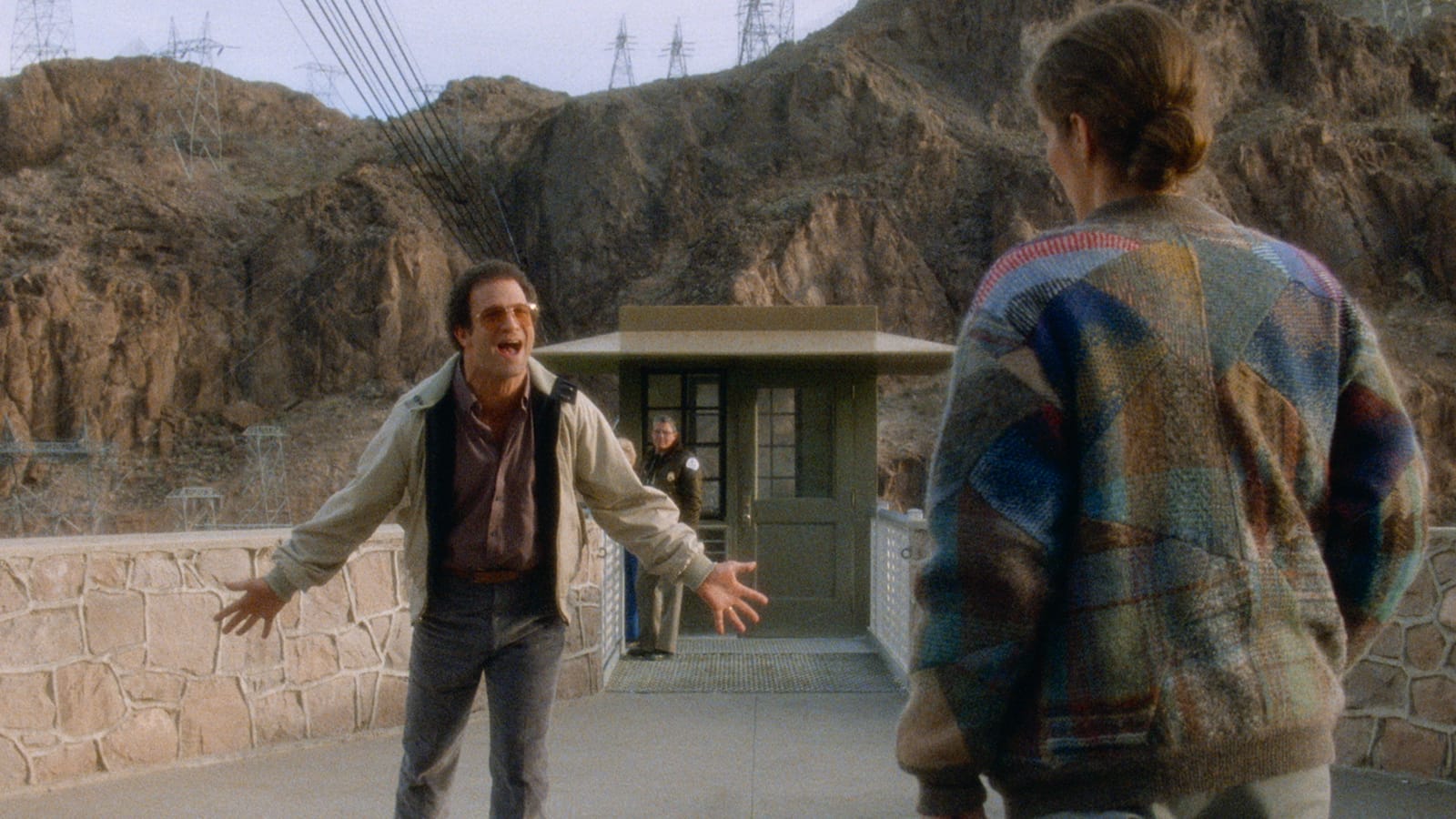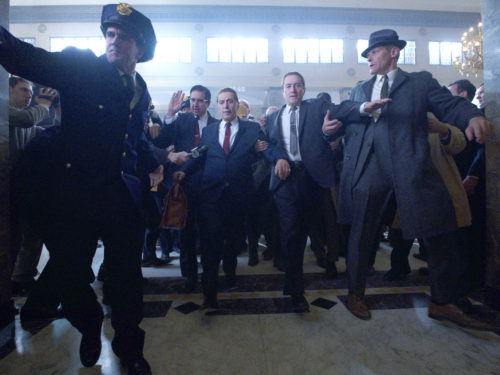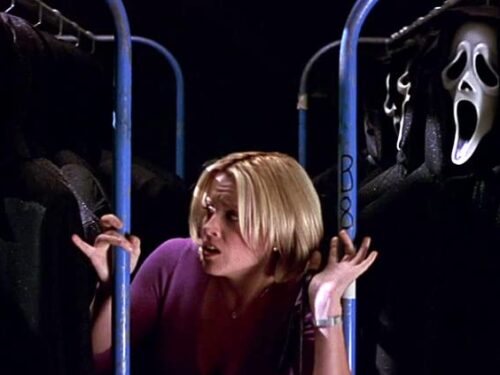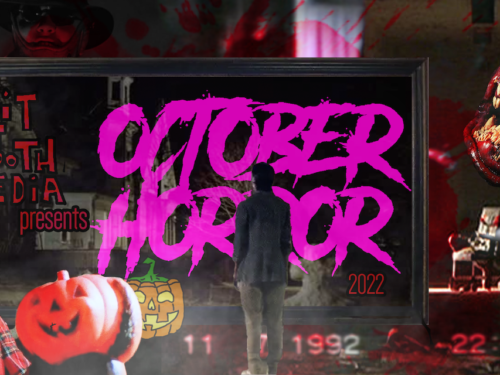In the finale of our two-part series examining the conclusions to Albert Brooks’ first three films and his road to Lost in America, Brett Wright dissects the impact of Brooks’ greatest work. Part one is available here.
“If, in fact, there is a hell, hell for me would be a place where I’d be given a huge budget and be told to make a movie to please Gene Shalit.”
— Albert Brooks in 1983
Just like Easy Rider: Lost in America (1985)
Lost in America stars Albert Brooks as David Howard, a creative consultant for a Los Angeles advertising firm who has been banking on a promotion to vice president. He and his wife, Linda (Julie Hagerty), are in the process of moving into a bigger house and buying a Mercedes in anticipation of the new position. Their marriage has hit a bit of a rough patch, but they recognize it and reassure themselves that it will be better post-promotion. Instead, David gets a lateral transfer to a New York office to work under Brad Tooley (Tom Tarpey), an executive who has big plans for the agency: a cheesy Ford Motors campaign involving Frank Sinatra’s “New York, New York.” David breaks down and resigns, convincing Linda they should drop out of society to “find themselves.” With Dennis Hopper’s Easy Rider (1969) as their spiritual guide, they attempt to ditch their safe yuppie existence by cashing out all of their bank accounts to create a bountiful “nest egg” of funds. They buy an expensive Winnebago for the adventure and hit the road.
Their ambitions are immediately compromised when they spend their first night in Las Vegas. Instead of sleeping under the stars as they planned, they shell out for a honeymoon suite. That night, Linda sneaks off and gambles away their entire nest egg. Broke, their desire for true independence is put to the test. They eventually move into a trailer park and find low-paying jobs: David as a school crossing guard, Linda as an assistant manager at a Der Wienerschnitzel hot dog stand. They abruptly decide to quit their idealistic new lifestyle and reintegrate into society by driving straight to New York for David to beg for his job back. Just like the bikers in Easy Rider, they blow it.
While it is true that Lost in America follows more traditional forms of Hollywood filmmaking, the shift to a more conventional style was both a response to the times and fitting of its subject matter. Real Life (1979) and Modern Romance (1981) may have gotten away with their more eccentric approaches as they were made at the tail-end of the 1970s Hollywood Renaissance, when studios, desperate to keep up with the rise and popularity of low-budget independent films, began taking greater risks with their content and allowing filmmakers more artistic control. Lost in America was released in the middle of the Reagan era, when the industry’s attention had shifted to more generic products, notably really expensive children’s films that could dominate the box office. At this same time in the standup comedy world, performers like Jerry Seinfeld were making comedy safe again with harmless jokes about breakfast cereal. Many comedians were establishing successful careers with unironic acts that greatly resembled the hack performers Brooks played satirically on stage and in his records. As actor Tony Grayson says of the period, “There was a hollowness underneath it all. It was more about the formula of the joke than what was being said. Comedians often said things in the right tone, which would then evoke the feeling of laughter… It felt like you could say gibberish… and people would laugh as normal.” (Watch Grayson in Laura Moss’ short film Allen Anders—Live at the Comedy Castle [Circa 1987] for a dramatic look at this strange era of comedy.)
Lost in America is Brooks’ first film set outside of the entertainment industry. The relative distance from his classic entertainer persona brings a new perspective to the creative conflicts Brooks was dealing with at the time. As a stand-up in the 1970s, success came quickly to Brooks. He had nearly total creative control over his television performances from the very beginning. But as a critically acclaimed filmmaker, his projects barely made dents at the box office. Following Real Life and Modern Romance, Brooks reportedly found himself taking smaller budgets in order to have more control on set (Slansky 1983). With the struggle to find funding for his third film, it is telling that Lost in America’s press kit stresses the importance Brooks placed on distancing himself from studio settings. The shoot was a road trip not unlike the one David and Linda find themselves on in the film, with Brooks trying to break from the artifice of Hollywood productions by shooting on-location as much as possible. But just like his characters, a return to Hollywood was inevitable for the film to be distributed by Warner Brothers.
Lost in America may appear less eccentric than Brooks’ previous films, but he learned to mask his edge. Negative critical opinions of his earlier films have often revolved around his performances. Detractors found his persona grating, yet his presence needed to be occasionally over-the-top for his satire to be effective. With Lost in America, Brooks shifts the extravagance out of his performance and layers it into the aesthetics of the film in a relatively more familiar style for mainstream audiences. The most obvious example of this is in the film’s music. Lost in America features Brooks’ first prominent use of a traditional Hollywood-style score, and he lets it overpower the actions taking place on screen. Like Brooks’ character in Real Life, the soundtrack is upbeat to the point of near aggression. The music seems to be scoring the triumphant, idealistic movie playing inside David and Linda’s heads rather than the one Brooks is actually making.
While being set outside of the entertainment industry, Brooks accentuates the film with personal Hollywood touches. Brooks casts producer Garry Marshall (Happy Days) as the casino manager who David must appeal to after Linda gambles away their nest egg. Herbert Nanas, Brooks’ manager and the film’s executive producer, makes a cameo late in the film as a Mercedes driver who asks crossing guard David for directions back to Los Angeles — David knows them by heart. These producer figures cast prominent shadows over the film: Marshall functions as the bureaucratic punisher as soon as David and Linda attempt to strike out on their own, while Nanas acts as a Pied Piper luring David back to his materialistic senses with the sweet smell of Mercedes leather.
Of all of Brooks’ self-reflexive techniques in the film, the frequent Easy Rider references pack the greatest punch. For the first time, we see Brooks exploring the other side of the entertainment equation of his act: playing a character who is not in the industry, but who has relied on the movies and television to craft his imagination and guide his dreams. When going over their options for how to properly drop out of society, David recalls his younger days with Linda: “Remember we kept saying ‘let’s find ourselves,’ but we didn’t have a dollar so we watched television instead?… This is just like Easy Rider except now it’s our turn.” Easy Rider maps the cinematic representation of David and Linda’s desire to escape the “road to nowhere” of their corporate existence, but they fail to see that Easy Rider essentially takes place on that same road.
The biker film plays an integral part in Lost in America’s narrative. “You go for the big money and then you’re free,” Billy (Dennis Hopper) explains at the end of Easy Rider just before he is gunned down on a country road. The hippie biker even aspires to retire in Florida. Following in Billy’s footsteps, David plans their escape as if it were an expense account. After working for the big money his entire life, he believes they have earned their freedom. Just as the Howards have their nest egg, the two bikers have their bikes loaded with drug money. David and Linda dress the part of their idealized rebellion with all the things money can buy, trading the bikes for an RV and the marijuana for a microwave. Both duos ultimately fail in their attempts to sever ties to American society due to their belief that freedom can be bought. Both films feature characters searching for an American Dream that probably only exists in the movies.
In Allegories of Cinema, David E. James argues that if Easy Rider truly wanted to endorse the ’60s counterculture, the film’s narrative would have ended in its early scene at a commune, denying the film both commercial success and its murderous ending (17, 18). To follow James’ thinking, Easy Rider’s failure is a triumph for Brooks’ comedy. Lost in America never even allows its characters a glimpse of any sort of counterculture because the Howards wouldn’t know one if they saw it. When David and Linda decide they can no longer live the dropout lifestyle after working a dayjob for one shift, they rush off to New York. Brooks begins the sequence by showing them tear out of the trailer park at high speed, as “New York, New York” blares over the soundtrack. David’s motivations are already conforming to the tune of Brad Tooley’s ad campaign.
When they reach New York City, the Winnebago parallel parks in front of a giant Madison Avenue office building. The door opens with David dressed in a suit as he kisses an apron-clad Linda on his way out. When David spots none other than Brad Tooley, the classic Brooks persona bursts forth with an overzealous “Brad!” as he begins chasing after Tooley.
The Howards are home.
Hollywood Endings: Mastering the Routine or Sticking to the Script?

Albert Brooks is probably too smart for his own good. He would be the first to admit it before brushing the issue away with a self-deprecating punchline. The endings of his early films are indicative expressions of cynical intelligence struggling under the “suitably commercial” conservatism of Hollywood. Brooks creates odd juxtapositions of self-defeating actions or delusional decisions being made by his characters set against upbeat, “happy ending” formal elements. At the conclusion of Modern Romance, Robert is on the verge of being dumped by Mary (again) before he wins her back by proposing. The scene’s visual elements are choreographed like these characters are a match made in heaven: Robert kneels down in their rustic Idyllwild cabin, grabs her hand, stares into her eyes before guiding her to a standing position. The camera leaves out the window as Joe Cocker’s “You Are So Beautiful” plays over the credits.
But Robert’s confession of love is more an inadvertent pleading of his own insanity: “Why do you think I drive around your house? Do you think I circle everyone’s house?” The film’s epilogue tells us that Robert and Mary get married in Las Vegas and immediately file for divorce, but are currently dating again. Discounting the cheap gag of an epilogue — which remains the most disappointing comedic move Brooks has made in any of his films— Brooks uses all the usual tricks of a romantic Hollywood ending, twisting them to deflate the emotions, creating an odd letdown of a conclusion without being sombre or downcast.
Real Life and Lost in America’s endings are nearly identical. In Real Life, Brooks’ character’s attempt at crossing over into serious filmmaking plays out like a deranged take on Sullivan’s Travels (Sturges, 1942). Instead of conforming with sentimental earnestness back into his old comedy style, as Sullivan does, Real Life ends with Brooks becoming the garish, hokey clown of a comedian’s nightmares. Realizing himself to be inadequate at capturing reality, Brooks talks himself down from his ambitions and settles with maniacal conviction back into his entertainer self. “The studio is right; the audience loves fake,” he says into the camera. “I can do fake.”
Lost in America perfects the “Brooks ending.” The film’s finale has baffled enough viewers and critics to earn a self-effacing gag in Brooks’ own Looking for Comedy in the Muslim World (2005). Brooks speeds through his conclusion as if it were forced upon him. As most Hollywood films about social dropouts require a reinstatement of its characters back into mainstream society, Lost in America’s ending becomes the greatest joke in the film, building up an epic (and angsty) presentation of his characters quitting and failing. Its abruptness is key; with the tacked-on, forced rush of wrapping it up so aggressively and loudly, one can practically hear Brooks screaming, “Is this ‘sufficiently commercial’ enough for you?!” at faceless studio heads. As David begs for his job back on the Madison Avenue sidewalk, the film turns the HOLLYWOOD up to breaking point: the camera pulls out to an impressive skyline view of the greatest city in the world as Sinatra nails his big finish and the credits role.

Scott Tobias sees the ending of Lost in America as the Howards’ opportunity for self-realization. “They can’t drop out of society. They are society,” he writes. “Maybe they’ll learn, through hard luck and humility, that the box isn’t so confining after all.” This happily-ever-after reading is nice, but Lost In America is no Sullivan’s Travels. One can be optimistic in predicting how life will continue for the Howards, but it’s the tone that really counts in Brooks’ final sequence. Lost in America’s conclusion bemoans a fate worse than death for an artist and performer like Albert Brooks. David doesn’t just conform back into the system — he becomes a parody of himself. He may return to some form of security and comfort, but at the cost of kissing up to people he has no respect for and by working on projects that he finds conventional and uninspiring. Could an Albert Brooks character really handle the failure of his idealized rebellion, along with his new awareness of his own limitations, with humility? Brooks’ personal creative dilemma of being a wildly inventive individual capable of pushing boundaries, but working in an industry that turns down his ideas for being “not sufficiently commercial,” drives Lost in America’s finale. But more profoundly, this is his film that best shows that “conventionality” itself — with all of the conforming industrial and social pressures and threats of self-compromise that the word entails — is perhaps Brooks’ greatest muse.
Following Lost in America, Brooks’ subsequent films take on a different tone. He began playing characters who are often well-employed and financially sound, but plagued with dread over how average they believe their lives have become. These characters have made creative or moral concessions in their careers, and their personal lives often leave a great deal to be desired. In Defending Your Life (1991), Brooks is put on trial in the afterlife to defend his every earthly complacency; Mother (1996) and The Muse (1999) feature Brooks as successful but worn-out writers desperate to find their spark again; Looking for Comedy in the Muslim World (2005) is the most melancholic, self-deprecating portrayal yet of his classic Real Life alter-ego, set during a late-career slump.
If their ideals and standards were not set so fantastically high, these earlier Brooks characters might just be able to pull off their respective feats. But the Brooks persona is an extremist. It’s all or nothing, in one sense: He is going to make the most spectacularly real film ever or go mad trying; he will be the sole focus of his lover’s attention or else it is over; he will quit his job, sell his house and take to the road rather than accept a lateral transfer.
But he is also stuck in his ways. His characters return to being ruled by their old routines: His “realness” is dictated by Hollywood standards of flash, expense and the need to be spellbound; he habitually returns to Mary out of neediness; he trades his corporately funded materialism for another form of materialistic comfort on the road. His characters’ greatest obstacles are their own delusional ideas of how free they are. They will protest their mouths off, but their hearts are rigidly institutionalized. They believe themselves to be improvisers, but prove themselves to be impressionists. They struggle to take that step into the unknown where their acts are truly tested. Ultimately, they desire comfort over freedom, familiarity over insight and reassurance over truth. The Brooks persona is a master of formula, but weary of becoming an explorer.
Stream Lost in America here
Purchase Lost in America on Blu-ray here
Follow Brett and Split Tooth Media on Twitter
(Split Tooth may earn a commission from purchases made through affiliate links on our site.)




